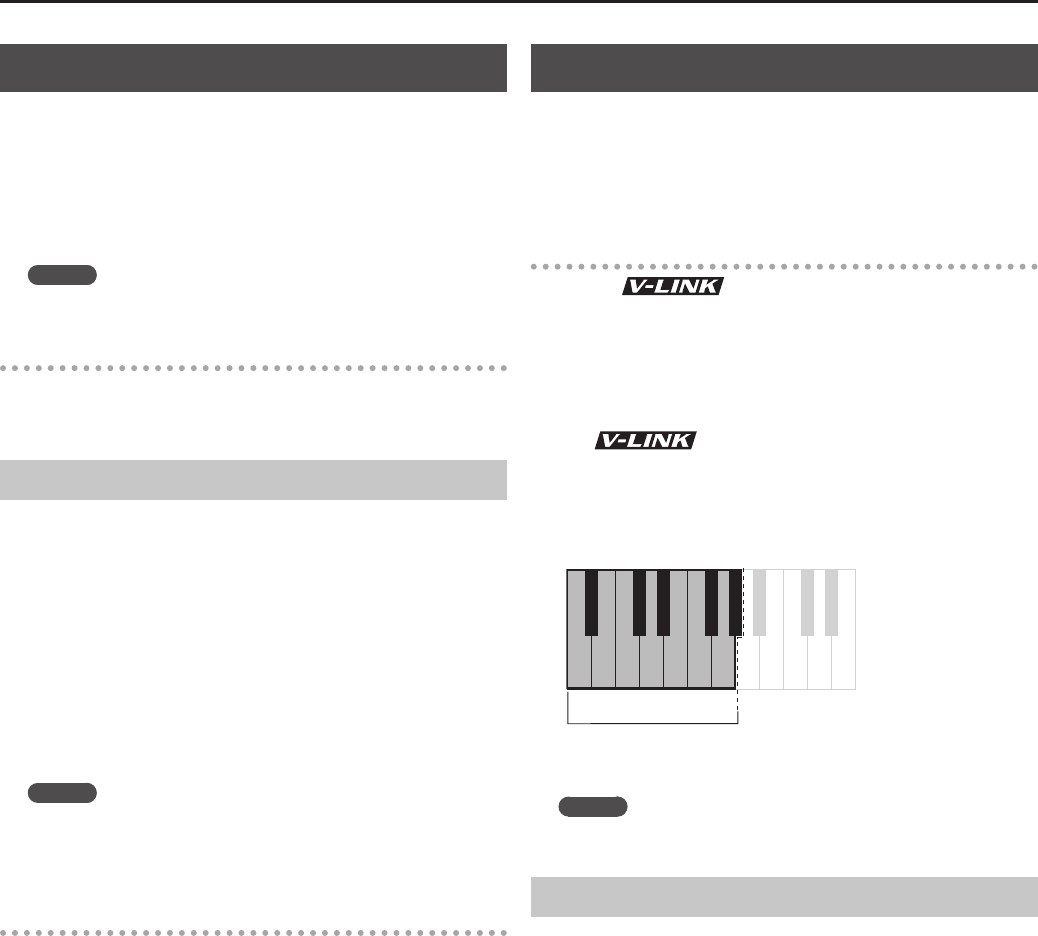
67
Connecting Other Devices
Connecting a Computer
If you use a commercially available USB cable to connect the USB
connector located on the bottom left of the HPi-6F to your computer,
you’ll be able to do the following things.
• SMF data played back by your computer software can make the
HPi-6F play sounds.
• MIDI data can be transferred between your sequencer software and
the HPi-6F for more sophisticated music production and editing.
MEMO
Refer to the Roland website for system requirements.
Caution when connecting a Computer
921
• To prevent malfunction and damage to your speakers, always be sure
to turn the volume all the way down on all your equipment, then
switch the power o on everything before you make any connections.
USB Driver Settings
Normally, there’s no need to install a driver in your computer. However,
if you are unable to successfully connect the HPi-6F to your computer,
you may be able to solve the problem by using the Roland original
driver.
Make USB driver settings on the HPi-6F before you install the driver on
your computer.
1. Press the [Application/Lesson] button ➝ [Function] ➝ [O]
button ➝ [USB] ➝ [O] button ➝ [USB Driver] (p. 22).
2. Use the cursor up/down buttons to change the setting.
3. If you’ve changed the setting, you must turn the HPi-6F’s
power o, then on again.
MEMO
• This setting is remembered even when the power is turned o.
• For details on downloading and installing the original driver, refer
to the Roland website.
Roland website
Here you can download the original driver, and read the installation
procedure and operating requirements.
http://www.roland.com/
Using V-LINK
Connecting the HPi-6F to a V-LINK compatible image device allows you
to control the images with the HPi-6F.
• To prevent malfunction and/or damage to speakers or other
devices, always turn down the volume, and turn o the power on
all devices before making any connections.
V-LINK
V-LINK ( ) is a function that allows music and images to
be performed together. By using MIDI to connect two or more V-LINK
compatible devices, you can easily enjoy performing a wide range
of visual eects that are linked to the expressive elements of a music
performance.
1. Hold down the [Reverb] button and press the [Transpose]
button.
The icon indicating that V-LINK is on appears in the
Notation screen.
2. Press any of the twelve keys at the left end of the keyboard.
The image will be controlled according to the function assigned to
each key.
C1 D1 E1 F1 G1A0
A0 – G#1
B0
3. To cancel V-LINK, hold down the [Reverb] button and press
the [Transpose] button.
MEMO
While V-LINK is switched on, no sound is produced when you press
any of the twelve keys at the left end of the keyboard.
Setting the V-LINK Transmit Channel
Here’s how to specify the channel on which video control messages are
transmitted.
1. Press the [Application/Lesson] button ➝ [Function] ➝ [O]
button ➝ [V-LINK] ➝ [O] button (p. 22).
2. Use the cursor up/down buttons to change the setting.
